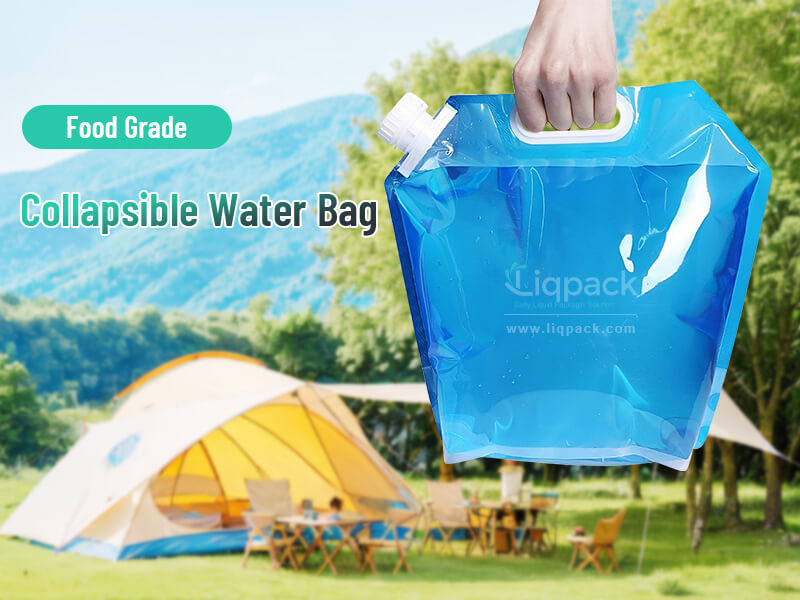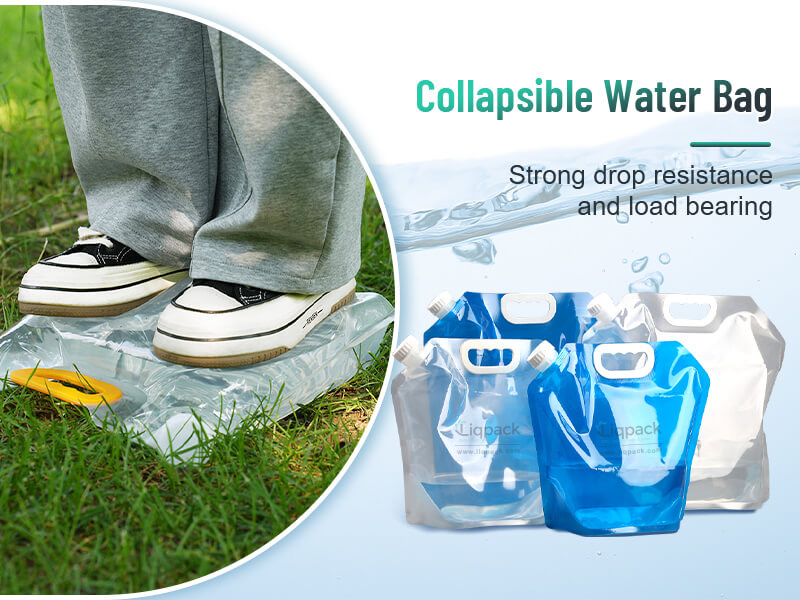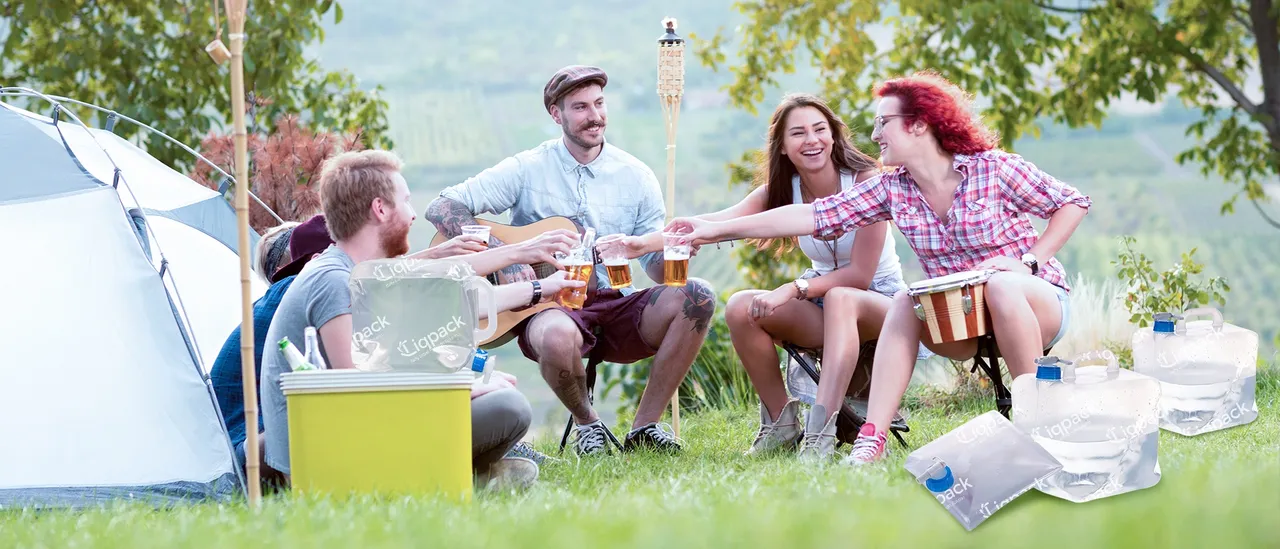
Collapsible water bags are convenient and portable, but without proper cleaning, they can develop odors and bacteria. This article shares effective tips to keep them fresh and safe.
Why Collapsible Water Bags Smell Over Time
Before we dive into the cleaning methods, it’s important to understand why collapsible water bags develop odors in the first place:
Bacterial Growth
Moist environments are ideal for bacterial and microbial growth. If water is left sitting in the bag or it’s not dried completely, it can begin to smell musty.
Mold and Mildew
Collapsible bags often retain moisture, especially in hard-to-reach areas like corners and drinking nozzles. This can lead to mold and mildew buildup, which produces a sour or earthy odor.
Plastic or Chemical Smell
New water bags may have a strong plastic odor from manufacturing residues or materials like TPU, PVC, or polyethylene.
Flavor Carryover
If you’ve stored flavored drinks, electrolytes, or juices in your water bag, these residues can linger and lead to sour smells.
Regular Cleaning: Your First Line of Defense
The key to odor prevention is routine cleaning after each use. Here’s how to perform a basic clean:
Materials Needed:
- Mild dish soap (fragrance-free)
- Warm water
- A soft brush or bottle-cleaning brush
- A long pipe cleaner or hydration tube brush (for hose cleaning)
- Clean towel or drying rack
Step-by-Step Cleaning:
- Empty the Bag Completely:
Pour out all remaining water or liquid. If possible, separate the cap, valve, or hose for individual cleaning.
- Employ a soapy rinse to clean the interior.
Add a few drops of mild dish soap to warm water. Fill the bag about halfway, seal it, and shake vigorously for a minute.
- Scrub Interior Surfaces:
Use a bottle brush or a clean sponge to scrub all internal surfaces, including corners and seams.
- Clean the Nozzle and Hose:
Use a pipe cleaner or dedicated hydration pack brush to clean inside the hose and nozzle tip thoroughly.
- Rinse Thoroughly:
Rinse the entire bag with clean water 2–3 times to remove any soap residue.

Deep Cleaning to Eliminate Stubborn Odors
If your water bag smells even after a regular wash, try one of the following deep-cleaning methods:
Baking Soda and Vinegar Method
A tried-and-true natural deodorizer combo.
Steps:
-
- Insert one tablespoon of baking soda followed by one cup of white vinegar into the bag.
- Fill it with warm water.
- Let it settle for 30 to 60 minutes.
- Scrub and rinse thoroughly.
Pro Tip:
This method also helps remove stains and residue buildup.
Lemon Juice Rinse
Great for neutralizing plastic taste and refreshing old bags.
Steps:
- Squeeze juice from one lemon into the bag.
- Add warm water and shake.
- Let it sit for 1 hour.
- Rinse thoroughly and air dry.
Hydrogen Peroxide Solution
An excellent antimicrobial agent.
Steps:
- Combine three parts water and one part 3% hydrogen peroxide.
- Pour into the bag and close the cap.
- Shake and let it sit for 20–30 minutes.
- Rinse thoroughly with clean water.
Cleaning Tablets (Hydration Reservoir Tablets)
Specialized cleaning tablets are available for hydration bladders and bottles.
Steps:
- Drop a cleaning tablet into your filled bag.
- Let it fizz and soak as directed (typically 15–30 mins).
- Rinse thoroughly after use.
Note:
These are especially useful for hard-to-clean corners and valves.

Proper Drying Techniques: Avoiding Mold and Odor
Even after a thorough cleaning, improper drying can undo all your efforts. Follow these tips to keep your bag fresh:
Open All Seals and Lids
Leave the cap, nozzle, and hose disconnected during drying to allow airflow into every part.
Make Use of a Hanger or Drying Rack
In a place with good ventilation, hang the bag upside down. Avoid humid places like bathrooms or basements.
Stuff with Paper Towels
If airflow is limited, stuff the inside with clean paper towels to absorb moisture and prop open the bag.
Make use of a hair dryer or fan (cool setting)
To expedite the drying process, lay the bag in front of a fan or set your hair dryer to cool air if you’re pressed for time.
Mold Prevention Tips
Once mold has formed, it’s much harder to get rid of it completely. Prevention is a better strategy. Here’s how to stop mold before it starts:
- Clean Immediately After Use: Don’t let liquids sit in the bag.
- Avoid sealing it while wet; always let it fully air dry before storing.
- Store With Lid Off or Slightly Open: This allows airflow, preventing condensation.
- Use Baking Soda as a Storage Deodorizer: While the bag is being stored, put a tiny sachet of baking soda inside.
Long-Term Storage Tips
When your collapsible water bag is not in use:
- Store it in a cool, dry place away from the sun.
- Make sure all components—bag, cap, nozzle, and hose—are completely dry.
- Tight folds can weaken the cloth over time, so try to avoid them.
If your water bag will be unused for months:
- Think about cleaning it both before and after storing it.
- To absorb moisture, keep a packet of silica gel inside.
Cleaning Frequency Guidelines
| Usage Type | Cleaning Frequency |
| Daily Water Use | Quick rinse every use; deep clean weekly |
| Occasional Use | Rinse after use; deep clean before storage |
| Sugar Beverages | Deep clean after each use |
| Long-Term Storage | Clean and dry thoroughly before and after storage |
When to Replace Your Collapsible Water Bag
Despite the best care, water bags don’t last forever. Watch out for the following signs:
- Persistent odor even after deep cleaning
- Visible mold spots that won’t come off
- Cracks, leaks, or deformed seals
- Discoloration or taste changes in water
If any of these issues persist, it’s safer to replace the bag than risk contamination.
Collapsible water bags are incredibly handy for hydration during outdoor adventures, emergency kits, or travel. But to ensure they remain a safe, odor-free, and functional part of your gear, consistent cleaning and proper storage are key.
- Liqpack


